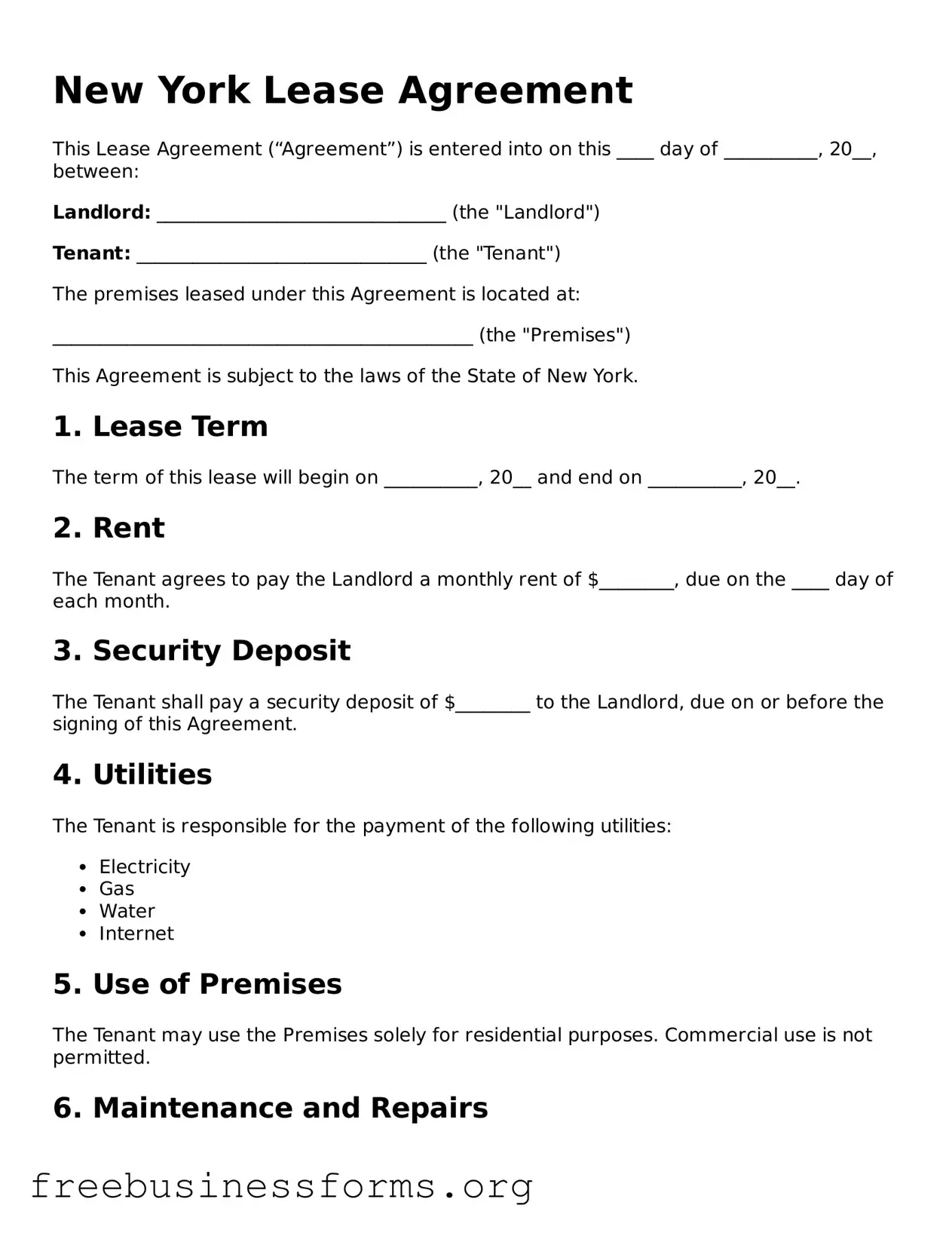New York Lease Agreement
This Lease Agreement (“Agreement”) is entered into on this ____ day of __________, 20__, between:
Landlord: _______________________________ (the "Landlord")
Tenant: _______________________________ (the "Tenant")
The premises leased under this Agreement is located at:
_____________________________________________ (the "Premises")
This Agreement is subject to the laws of the State of New York.
1. Lease Term
The term of this lease will begin on __________, 20__ and end on __________, 20__.
2. Rent
The Tenant agrees to pay the Landlord a monthly rent of $________, due on the ____ day of each month.
3. Security Deposit
The Tenant shall pay a security deposit of $________ to the Landlord, due on or before the signing of this Agreement.
4. Utilities
The Tenant is responsible for the payment of the following utilities:
- Electricity
- Gas
- Water
- Internet
5. Use of Premises
The Tenant may use the Premises solely for residential purposes. Commercial use is not permitted.
6. Maintenance and Repairs
The Tenant agrees to maintain the Premises in good condition. The Landlord is responsible for major repairs.
7. Termination
Either party may terminate this Agreement by giving written notice _________ days in advance.
8. Governing Law
This Agreement shall be governed by the laws of New York.
Signatures
In witness whereof, the parties hereby execute this Agreement on the date first above written.
Landlord Signature: _______________________________ Date: _______________
Tenant Signature: _______________________________ Date: _______________
